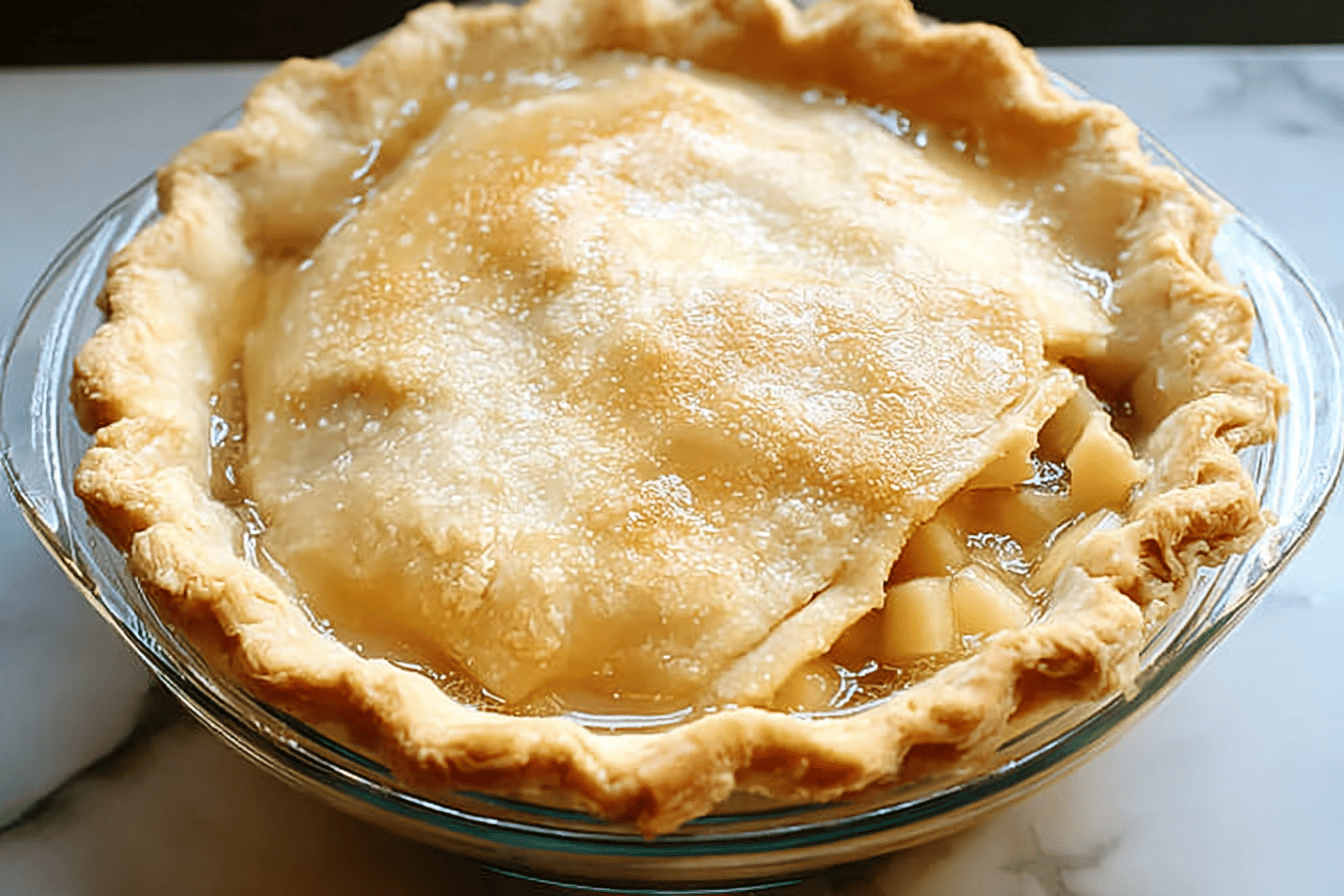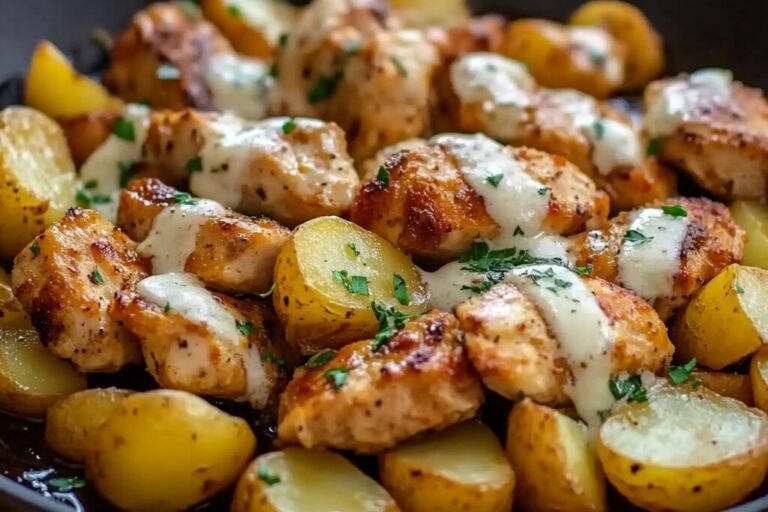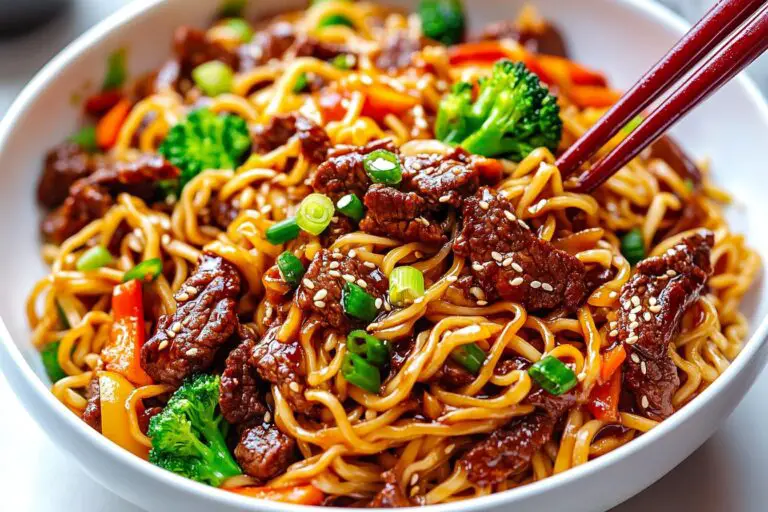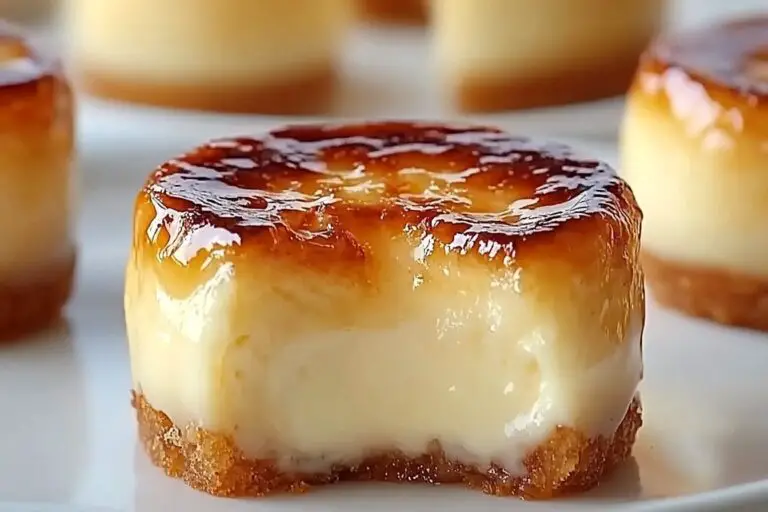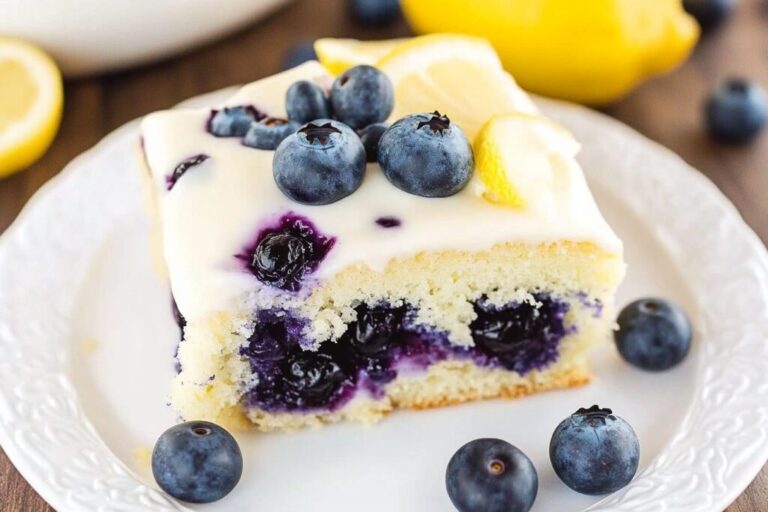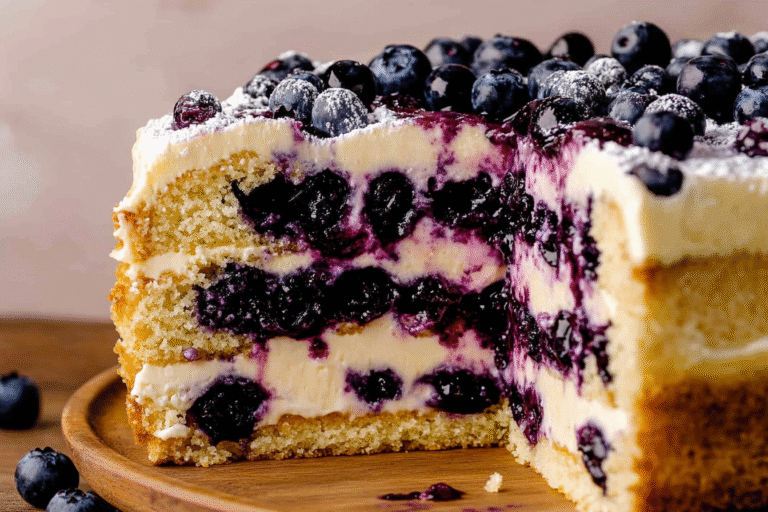Perfect Flaky Butter Pie Crust
Introduction
If there is one thing that stands at the heart of all delicious pies, it’s the crust. A perfectly flaky butter pie crust can turn any pie filling into a masterpiece. Whether you’re baking an apple pie for dessert or preparing a savory quiche, this pie crust recipe is an essential addition to your kitchen arsenal. Easy to make and versatile, this recipe ensures your pies always taste as good as they look.
Detailed Ingredients with Measures
All-purpose flour
2 1/2 cups – the foundation for the perfect crust. Always sift for a smoother dough.
Unsalted butter
1 cup (cold and cubed) – the secret to flakiness in your crust. Keep it cold to achieve the right consistency.
Salt
1 tsp – just a pinch to balance flavors.
Sugar
1 tbsp – adds a subtle sweetness to the crust without overpowering the filling.
Ice water
6 to 8 tbsp – start with less and adjust as needed to bring the dough together without making it sticky.
Prep Time
Preparation time in this recipe is minimal, taking about 15–20 minutes to gather and prepare all of the ingredients, mix the dough, and form it into a disk. This allows you ample time to focus on crafting a beautiful pie.
Cook Time, Total Time, Yield
Cook time
Depending on the pie filling and recipe type, bake the crust for approximately 12–15 minutes if pre-baked or as directed if baked with the filling.
Total time
Between preparation and baking, you’re looking at around 30–40 minutes to complete your crust. This makes it a quick and fulfilling solution for pie enthusiasts.
Yield
This recipe typically yields enough for one 9-inch double crust pie or two single crust pies, perfect for sharing delicious desserts or savory treats with your family and friends.
Whip up this pie crust and let your next creation shine with a buttery, flaky foundation that will delight everyone at the table!
“`html
Detailed Directions and Instructions
Step 1: Prepare the Ingredients
1. Gather all the necessary ingredients for the pie crust.
2. Make sure the butter is cold and cut it into small cubes. Chill them in the refrigerator until ready to use.
3. Prepare ice-cold water by adding a few cubes of ice to water, then measure out what you need when you’re ready to mix.
Step 2: Combine Dry Ingredients
1. In a large mixing bowl, add the flour, sugar, and salt. Stir together to combine evenly.
Step 3: Incorporate the Butter
1. Add the cold butter cubes into the flour mixture.
2. Using a pastry cutter, fork, or your fingers, work the butter into the flour until the mixture resembles coarse crumbs with some larger pea-sized chunks of butter remaining.
Step 4: Add the Cold Water
1. Gradually drizzle the ice water, one tablespoon at a time, into the flour and butter mixture.
2. Stir gently with a fork after each addition to allow moisture to blend. Stop adding water as soon as the dough starts holding together when pressed between your fingers.
Step 5: Form the Dough
1. Turn the dough onto a lightly floured surface.
2. Gather the dough into a ball, but avoid overworking it. Handle the dough just enough to bring it together.
3. Divide the dough into two equal portions if making a double-crust pie. Flatten each into a disc, wrap them tightly with plastic wrap, and refrigerate for at least 1 hour (or up to 2 days).
Step 6: Roll Out the Dough
1. Lightly flour your work surface and rolling pin.
2. Remove one disc of dough from the refrigerator and allow it to sit at room temperature for a few minutes until slightly pliable.
3. Roll the dough into a circle approximately 1/8 inch thick and about 2 inches larger than your pie dish to account for the edges.
4. Carefully transfer the rolled-out dough to the pie dish, pressing it gently into the bottom and sides.
Step 7: Trim and Prepare for Filling
1. Trim any excess dough hanging over the edge of the pie dish, leaving about a 1-inch overhang.
2. Tuck the overhang underneath itself around the edges and crimp or decorate as desired for the crust design.
3. If making a double-crust pie, roll out the second disc of dough similarly for the top crust.
Step 8: For Blind Baking (If Necessary)
1. If your pie recipe calls for blind baking, line the dough in the pie dish with parchment paper or aluminum foil.
2. Fill it with pie weights (or dried beans/rice) to prevent puffing.
3. Bake in a preheated oven at 375°F (190°C) for about 15-20 minutes, then remove the weights and bake for an additional 5-10 minutes or until lightly golden.
Step 9: Fill and Bake
1. Add your desired filling to the prepared crust.
2. If using a double crust, place the rolled-out top crust over the filling, seal the edges, and cut small slits for steam to escape.
3. Bake as directed in your specific pie recipe.
Notes
Note 1: Keep Ingredients Cold
The butter and water should remain cold throughout the process to ensure a flaky crust. Work quickly and refrigerate ingredients as needed.
Note 2: Avoid Overmixing
Be careful not to overwork the dough, as this can lead to a tough crust. The goal is to have visible flecks of butter in the dough.
Note 3: Dough Storage
Wrapped dough can be stored in the refrigerator for up to 2 days or frozen for up to 3 months. Thaw frozen dough in the refrigerator before using.
Note 4: Rolling Tips
If the dough becomes sticky while rolling, chill it briefly in the refrigerator. Use light and even pressure while rolling to prevent tearing.
Note 5: Blind Baking Caution
Take care when handling hot pie weights or beans after blind baking. Allow them to cool completely before storing.
Note 6: Experiment with Flavors
You can add subtle flavors to the crust by incorporating ingredients like grated cheese, herbs, or spices into the flour mixture before adding the butter.
“`
Cook techniques
Keep Ingredients Cold
Ensuring all ingredients, especially butter, are cold before starting helps create a flaky texture in the crust. Refrigerate or freeze ingredients if necessary.
Use a Pastry Cutter or Food Processor
Quickly combine the butter and dry ingredients using a pastry cutter or food processor to avoid overmixing and to keep small, cold butter pieces in the dough.
Handle Dough Gently and Minimize Mixing
Overworking the dough can lead to a tough crust. Use gentle motions and minimal mixing to keep the dough tender and flaky.
Use Ice Water Gradually
Add ice water one tablespoon at a time until the dough just holds together. Avoid adding too much water to prevent a sticky dough.
Rest the Dough
Chill the dough in the refrigerator after mixing and before rolling it out. This helps relax the gluten and makes the dough easier to handle.
Roll Carefully and Evenly
Roll the dough from the center outward with a light touch. Rotate the dough frequently to maintain even thickness and avoid sticking.
Keep the Dough Cool While Rolling
If the dough starts to warm up as you work, place it in the refrigerator for a short time to keep the butter solid and the dough easy to work with.
FAQ
What is the key to making a flaky pie crust?
The key is to use cold ingredients, especially butter, and to handle the dough as little as possible to create layers that result in a flaky texture.
Why is cold butter important for pie crust?
Cold butter stays solid and creates pockets in the dough when baked, leading to a flaky texture. Warm butter mixes more thoroughly, resulting in a denser crust.
Can I make pie crust in advance?
Yes, you can make the dough ahead of time and store it in the refrigerator for up to 2 days, or freeze it for longer-term storage.
How do I prevent the dough from sticking while rolling it out?
Lightly flour your surface and rolling pin, and rotate the dough frequently. If the dough gets too sticky, refrigerate it for a few minutes.
Can I use a food processor to make pie crust?
Yes, using a food processor can speed up the process. Just make sure not to overmix. Pulse until the butter pieces are pea-sized for best results.
How do I fix a crumbly dough that won’t come together?
Add ice water one tablespoon at a time, mixing gently until the dough holds together, but be cautious not to make it too wet.
How thin should I roll out pie crust?
Typically, pie crust should be rolled out to about 1/8-inch thickness for the best balance of texture and durability.
Why does my pie crust shrink when baking?
Shrinking can occur if the dough wasn’t rested long enough or if it was overworked, causing the gluten to tighten. Be sure to chill the dough before baking.
Can I substitute butter with shortening?
Yes, shortening can be used for pie crust, and it creates a tender texture. However, butter adds flavor and flakiness that shortening alone may not provide. Some recipes combine both for the best results.
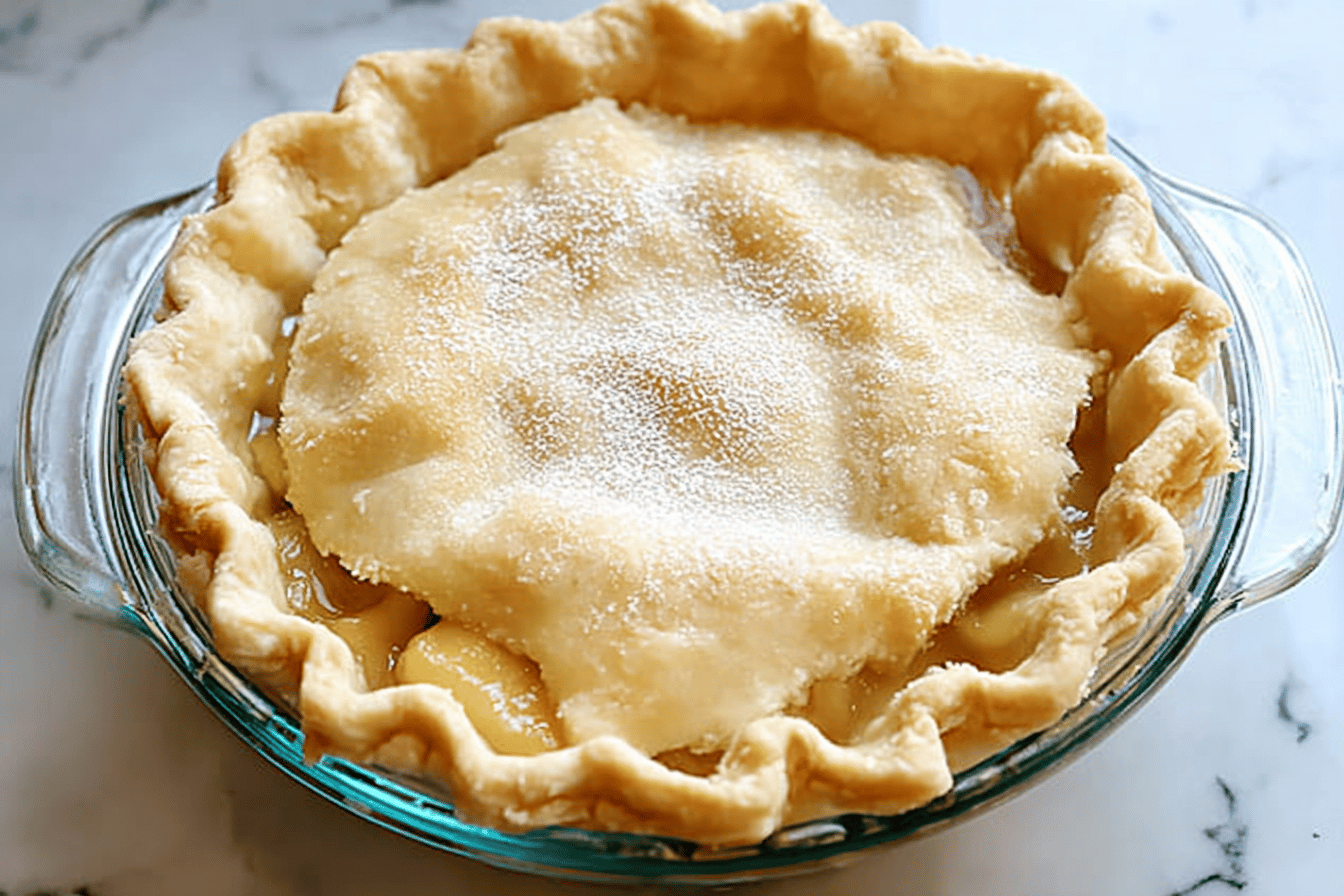
“`html
Conclusion
Creating the perfect flaky butter pie crust is not only achievable but also a rewarding process that transforms your pies into bakery-quality creations. With attention to detail, quality ingredients, and proper techniques, you can consistently make a crust that is tender, flaky, and delicious. Whether you are preparing a sweet or savory pie, this versatile butter crust is bound to elevate your recipes and delight anyone who tries it. The key lies in the balance of butter and precise handling, making each pie a work of art and a joy to share.
More recipes suggestions and combination
Classic Apple Pie
Pair the buttery, flaky crust with a classic apple pie filling made with cinnamon-spiced apples for a timeless dessert option.
Chicken Pot Pie
Use the crust for a savory combination by creating a creamy chicken pot pie filled with vegetables and herbs.
Pumpkin Pie
For a seasonal favorite, fill your pie crust with a silky pumpkin and spice mixture, perfect for autumn celebrations.
Mixed Berry Galette
Transform your pie crust into a rustic galette by filling it with a combination of blueberries, raspberries, and strawberries.
Lemon Meringue Pie
Enjoy a refreshing dessert by combining the buttery crust with a tangy lemon curd topped with fluffy meringue.
Quiche Lorraine
Utilize the pie crust for a savory breakfast or brunch option with a classic Quiche Lorraine, filled with eggs, cream, bacon, and cheese.
Pecan Pie
Create a rich and indulgent dessert with a pie crust filled with a sticky, sweet pecan mixture, perfect for festive occasions.
Vegetable Tart
Prepare a savory vegetable tart by layering roasted vegetables and cheese onto the buttery crust for a delightful appetizer or side dish.
“`

